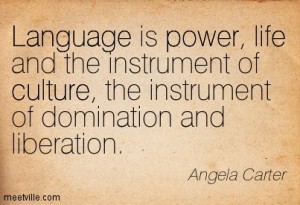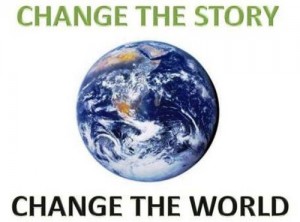Here is my version on how evil comes into the world 🙂
From her first blink on, her mother and father were right beside her. Flowers bloomed and the birds tweeted away. Immediately welcomed into loving arms and happy tears, child is surrounded by happiness. She is clothed, fed, and watered. She is kissed, cherished, and held. She is not only cute, but smart, brave, and strong. She is a baby that has the world set in front of her with support along the way. Mother teaches her how to talk and Father teaches her how to eat. Both read to her and sing the chapters that are little longer. Everything is protected, sheltered, safe. The flowers die with the heat though, and Mother and Father start to be exhausted with the sheer force of child. Child is talkative, runs instead of walks, and has an independent streak. The heat makes them hold child even closer, they teach her how to protect herself from the elements and how to properly take care of herself. That in heat, child needs to water herself just like the flowers in the springtime. Father teaches her how to swim and Mother teaches her how to bike. Everything is perfect, just like the smell of sunshine and freshly cut grass. When fall hits and the leaves strike the ground, child is almost an adult. Growing up is an accomplishment of herself and her parents. Father teaches her about self-esteem and Mother teaches her taxes. The future is in limbo but she is not. Steady and sturdy, flanked by parents.
Evil is the childhood with the eternal winter. Child was not welcomed at birth. She was scarcely clothed, fed, or watered. She is never kissed, cherished, or held. Child has to entertain herself, often with a blank TV screen and a box of books she cannot read. Mother does teach her how to talk, but her language is not geared for children and Father does not do any of the cooking so she fails to learn. Sometimes dinner is coffee and a cigarette with no laughter. Mother teaches her how to wear false eyelashes and Father tells her to be Daddy’s Little Girl. Mother laughs at the school district that keeps insisting that her daughter not skip classes and Father tells her that the black market rakes in much more money. When she comments quietly on attending college to study, she is merely ignored. Father has friends who stare a little too long and Mother has sisters that primp her for a night out. She is in limbo but her future is not. Her future is clearly stated, a childhood absent of nurture and of protection. Evil was created in this very moment in which child was born and ignored, not cherished. Evil is a system that fails to protect the innocent–the children.
Evil will not learn. Evil attacks everyone, it does not discriminate. But humans can learn. Without humans, there is no evil and therefore people can adapt to eliminate evil. Evil harms those who do not have a choice whether to participate or not the most. Evil is the eternal winter of a dark-filled, grey childhood. A childhood that that forces children into adulthood at birth.
End.
So I feel like I need to explain part of inspiration of how I think evil is created. I work as a Bylaw Compliance Officer and everyday I hear of sickening crimes against children and how the children are exploited by those that are supposed to love them. I truly do think evil can start in the home if the home is not a loving place. I know of why too many stories of evil to deny this truth. I also tied it into the seasons as growing up in the Okanagan, every story that I know and have been told has some mention of the weather or the season. We all have a deep connection to Mother Earth and I think every story is linked to the Earth in some way.
Bibliography
“Emotional Child Abuse: The Invisible Plague”. Susan Jacoby. February 1985. Web. Retrieved May. 28, 2015 from http://www.nospank.net/jacoby.htm
Stepp, Stephanie D., et al. “Reciprocal Effects of Parenting and Borderline Personality Disorder Symptoms in Adolescent Girls.” Development and psychopathology 26.2 (2014): 361-78.

